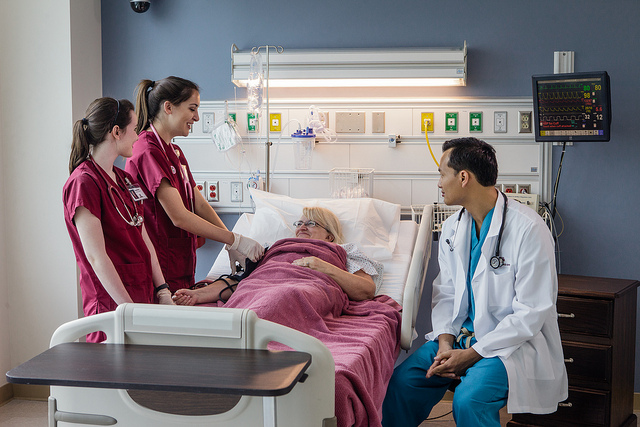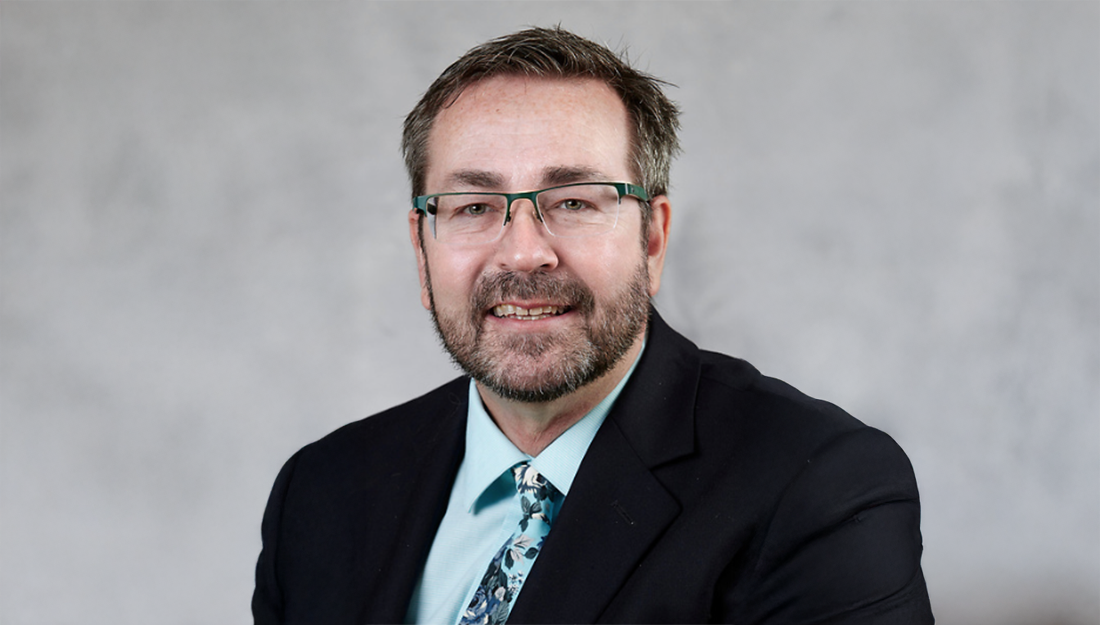- Lindsey Hendrix
- Medicine, Nursing, Pharmacy, Public Health
Piecing together the puzzle: Addressing the primary care shortage

It’s no surprise the United States has been facing a shortage of primary care physicians for several years. This shortage, coupled with a growing population, an aging population (physicians included) and the entrance of newly insured individuals following implementation of the Affordable Care Act, will increase the demand for primary care services across the country. In Texas, this demand will likely be even higher since the state currently falls below the national average with just 165 physicians for every 100,000 individuals. In 126 of 254 Texas counties, primary care services are so low that the U.S. Department of Health and Human Services has declared these regions Health Professional Shortage Areas.
But why, exactly, are physicians in such short supply? The Texas shortage can be attributed to several factors. First, primary care interest from medical school students has traditionally been relatively low due to low-income potential compared with other specialties, but demand for primary care physicians has gone up. Following implementation of the Affordable Care Act, millions of Americans who were not previously insured are entering the health care system. The Texas population is outpacing the national growth rate, and more aging Baby Boomers are becoming eligible for Medicare every day. In addition, the prevalence of chronic diseases, such as diabetes and hypertension, is growing, requiring more health care services. And to top it off, about one-third of all doctors plan to retire this decade, but the number of available residency slots hasn’t kept pace with the increase in medical graduates, leaving some graduates in limbo, unable to secure on-the-job training required before they can begin practice.
Texas A&M Health Science Center is heeding the call to fill the overwhelming primary care gap, not only by producing more primary care physicians and working with partners where possible to develop new residency programs or expand existing ones, but also by extending health care teams through educational programs in nursing and pharmacy and empowering patients through targeted research and outreach programs.
Producing more primary care physicians
More than half – 92 out of 157 – of Texas A&M College of Medicine graduates placed in primary care residencies in 2014, well above the national average. In fact, recent studies by the Council on Graduate Medical Education show that fewer than 20 percent of all U.S. medical students are choosing primary care specialties. So, why are future Aggie physicians more attracted to the primary care setting?
“It has a lot to do with the kind of students we recruit,” said Paul Ogden, M.D., interim dean of the Texas A&M College of Medicine. “Texas A&M has always possessed a service mentality due to our roots as a land-grant university, and the physicians we train want to serve their patients. They get to interact more with their patients in primary care settings, and they value that service more than the money other specialties can offer.”
Throughout the years, the college has also established key partnerships in rural areas where health care services are in dire need. One such partnership with DeTar Healthcare System recently established a Family Medicine Residency Program in Victoria that addresses the critical need for more primary care physicians in South Texas. The three-year program, which will accept its first six residents in July 2016, and other upcoming partnerships of this nature, will play a key role in the development of a comprehensive physician workforce solution for the state.
However, the problem is not one-dimensional, and medical schools alone cannot fill the growing need for primary care services.
“Fixing the nation’s primary care shortage goes far beyond recruiting and training more primary care doctors,” Ogden said. “The fix isn’t physician-centric, because medical schools simply can’t produce enough physicians to address the need.”
Extending the health care team
To make bigger strides toward closing the gap, the primary care team must be extended with additional nurses and pharmacists, and Texas A&M Health Science Center is doing just that.
The Texas A&M College of Nursing recently announced the creation of a new Master of Science in Nursing – Family Nurse Practitioner (M.S.N.-FNP) graduate program. The program is expected to launch in January 2015, pending final approval from the Texas Board of Nursing.
The family nurse practitioner program will produce nurses who can provide primary, acute and specialty health care. Like registered nurses, nurse practitioners perform thorough assessments, but in addition, have the training to diagnose patients, prescribe treatments and medications, and assume primary responsibility for patients’ overall care.
Expanding the role of pharmacists is another avenue for filling the rising demand for health care.
“Today, more than ever, pharmacists are likely to be found engaged in conversations with customers, providing information on over-the-counter drugs, administering immunizations, and assisting with overall disease prevention and management, while improving patient medication adherence and outcomes,” said Indra K. Reddy, Ph.D., professor and founding dean of the Texas A&M Irma Lerma Rangel College of Pharmacy in Kingsville, Texas.
Research shows that patients who work with a team that includes a pharmacist and one or more physicians are more likely to achieve improved health goals. This co-management of the patient with the primary care provider offers more direct, patient-focused care and ultimately, better patient outcomes.
To that end, the Texas A&M Rangel College of Pharmacy trains future pharmacists in a variety of health care settings, and oftentimes alongside medical and nursing students in the clinical setting. Fourth-year students complete rotations in community pharmacies, retail pharmacies, clinics and hospitals. Pharmacy students also rotate through the Texas A&M Health Science Center Diabetes Education program in Corpus Christi, Texas, teaching diabetes patients about medication options, insulin administration and medication adherence.
Empowering patients with self-care education
Working with a comprehensive health care team can help improve patient outcomes, but there is one person who has perhaps the most impact on your overall wellness: you.
Researchers at the Texas A&M School of Public Health are working with clinicians to develop programs that educate the public about the importance of self-care in their journey toward overall well-being.
One of the gaps they have identified, both in research and in practice, is the disconnect between what is recommended in the clinical setting and how, or if, patients are implementing those recommendations in their daily lives. These recommendations include becoming more physically active, eating a healthier diet, taking certain medications and incorporating dietary supplements or drinking more water.
To help bridge that gap, the school has developed evidence-based, chronic disease self-management programs and fall prevention programs to educate patients on how to take control of their own health. The goal is to keep people healthy so they don’t have to see their primary care provider often or utilize the emergency room, which should help alleviate congestion of those services.
The school currently offers chronic disease self-management, fall prevention, physical activity and nutrition, stress management and medication management programs in the Brazos Valley region of Texas. Partnerships have also been formed with the Texas Falls Prevention Coalition, the Texas Department of Aging and Disability Services and the Texas Department of State Health Services to build programs in other parts of the state.
“We are helping to build upon and expand the reach of clinicians by going beyond the clinic walls and into the community, engaging people in activities and teaching them skills that will help them better manage their chronic diseases, reduce their risk for falls, and avoid medication complications,” said Marcia Ory, Ph.D., regents and distinguished professor at the Texas A&M School of Public Health.
Utilizing community health workers
The Texas A&M Health Science Center Diabetes Education Program in Corpus Christi follows a similar formula as the programs disseminated by the School of Public Health. Health educators, who include nurses, certified diabetes educators, registered dietitians and nutritionists, teach diabetes patients in South Texas how to take control of their disease. The program consists of lab work evaluation, education and a one-year follow-up program to measure patients’ progress toward improved health. In rural areas where patients are unable to travel to the program’s clinic in the city, community health workers (CHWs) visit patients in their homes to take basic lab work such as blood pressure, cholesterol and blood sugar. They also answer questions, connect patients to services and provide informal counseling and social support.
Many health care providers are beginning to recognize the value of CHWs (also known as promotores de salud, community health advocates, lay health educators, peer health promoters and community health outreach workers) as a way to expand primary care services in rural areas. CHWs are usually not formally trained as health care providers, but they can deliver some basic direct services (like first aid) and administer health screening tests. Because they are members of the communities which they serve, CHWs are able to connect with patients on a peer level to provide culturally appropriate and accessible health education and information.
By expanding the health care team to include not only physicians, but nurses, nurse practitioners, pharmacists, community health workers, health educators and patients themselves, Texas A&M is piecing together the puzzle to help alleviate the current primary care shortage, and thus ensure that Texans are getting the best care possible. At the end of the day, health care is a team sport.
Media contact: media@tamu.edu


